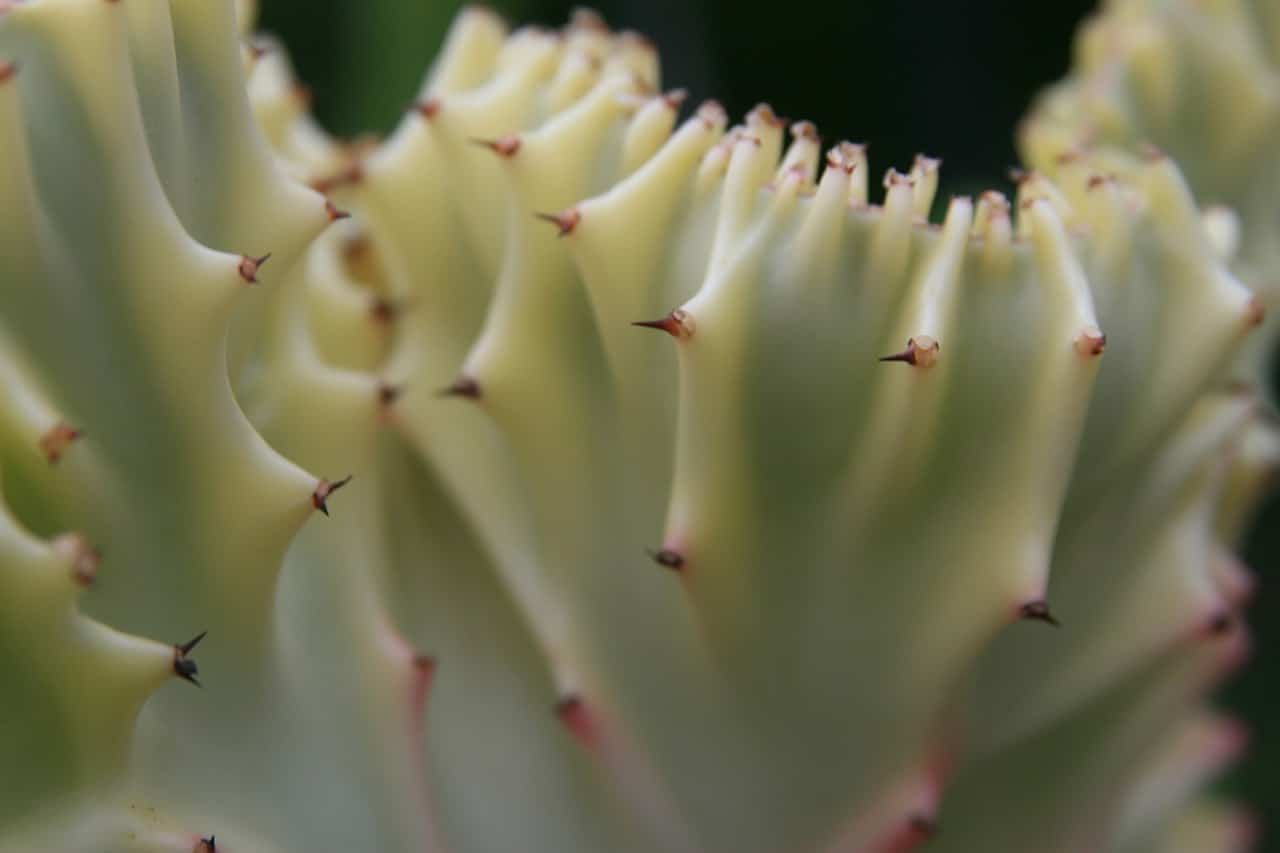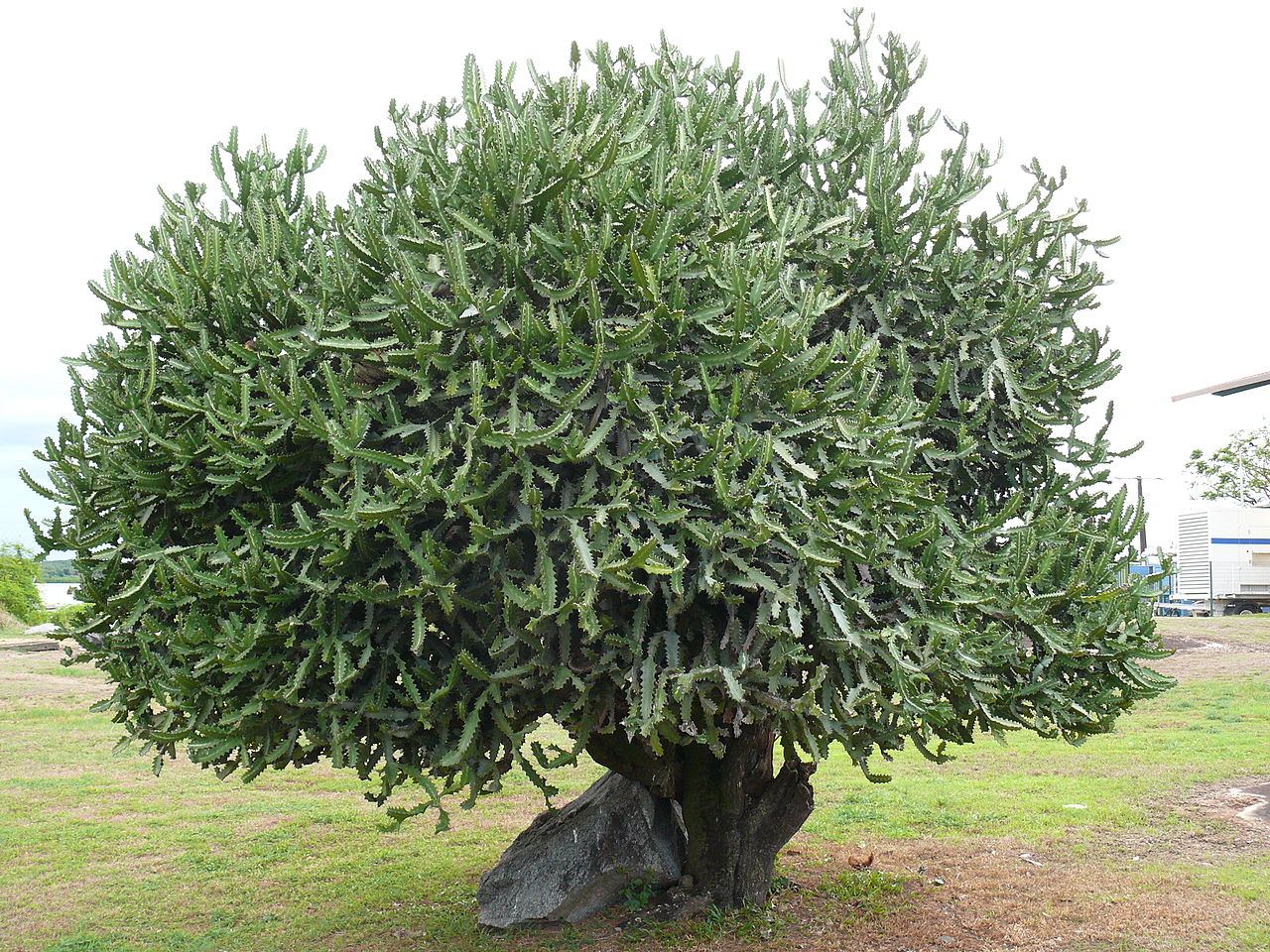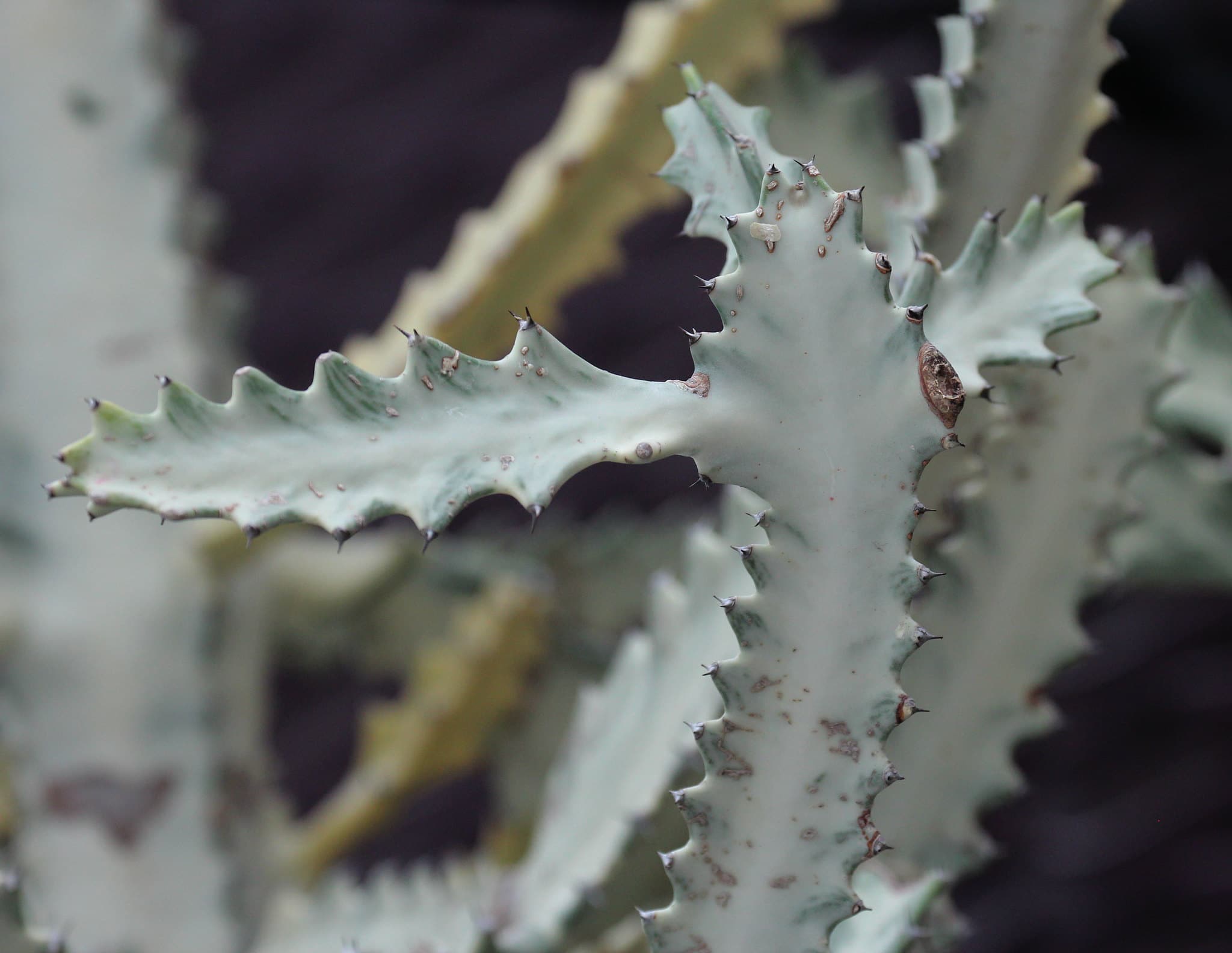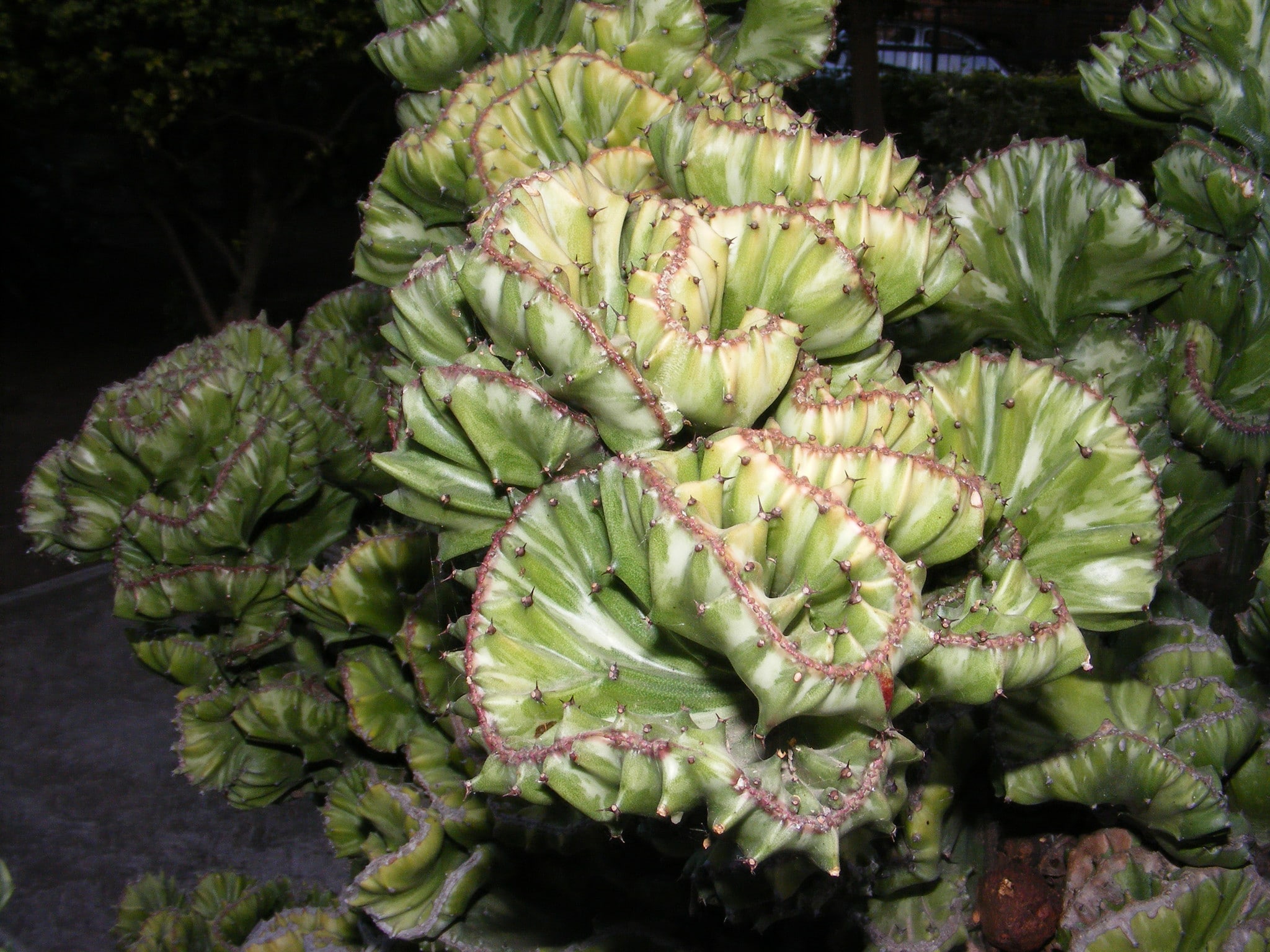
Image - Wikimedia / David J. Stang
La Euphorbia lactea It is a beautiful succulent plant whose maintenance is sometimes surprising ... and not always for the better, especially when it is bought grafted. But it is so beautiful, that I can assure you that taking into account four things that I am going to tell you next, it will not be difficult for you to fall even more in love with this species.
And it is that, after all, we are talking about a euphorbia, a genus of plants that is characterized especially by its adaptability and resistance to drought, as well as to high temperatures. What's more, look great almost anywhere .
Origin and characteristics of Euphorbia lactea

Image - Wikimedia / Arria Belli
It is a shrub native to Asia, especially India and Sri Lanka. Reaches a height of up to 5 meters, with a rounded and very dense crown formed by succulent branches 3 to 5 centimeters in diameter. The stem crests have short spines of up to 5 millimeters, so they could almost be said to be harmless 🙂. The leaves are tiny and deciduous, falling in the dry season. These tend to go unnoticed anyway, so they lack ornamental value.
It blooms in summer, producing small yellow flowers. Like all euphorbia inside its stems and branches contains a milky-looking latex which causes irritation if it comes into contact with skin, eyes and mucous membranes.
Cultivating Euphorbia lactea f. crystal It is highly appreciated as an indoor plant, as well as in patios in places that enjoy a mild climate.
What care do you need?
If you want to have a copy, and ensure that it does not die, we recommend that you take the following into account:
Climate
La Euphorbia lactea it is a tropical plant, so It can only be had outside all year round if the annual minimum temperature is 10 degrees Celsius.. Otherwise, it must be protected in a greenhouse or indoors.
Location
- Interior: it is a good plant to have in the home, but the room in which it is placed has to be bright and the euphoria has to be away from both hot and cold air currents.
Avoid putting it right in front of the window, as it could produce the magnifying glass effect, which occurs when the sun's rays enter through the glass, and when it hits the plant it burns. - Body exterior:: lots of light, but never direct, especially if you've bought the cultivar Euphorbia lactea cv 'White Ghost', which is the one with all the whitish stems, otherwise the star king would cause burns.
Irrigation

Image - Flickr / Cerlin Ng
Irrigation must be low. To save you trouble, water only when the soil or substrate is dry, and never water from above because it could rot.
If you have it in a pot, avoid putting a plate under it unless you always remember to remove any excess water after each watering. And the fact is that the water that remains stagnant in the dish rots the roots, and after them the plant spoils. For this same reason, it should not be planted in pots without holes.
Subscriber
From early spring to late summer it is highly recommended to pay to the Euphorbia lactea with specific fertilizers for cacti and succulents, following the indications specified on the package.
Multiplication
It multiplies by cuttings in spring-summer, following this step by step:
- First, you have to put on gloves, if they are rubber (like kitchen ones) much better.
- Then cut a branch that you see is healthy and measure about 20-30 centimeters.
- Then, place it in a cool, dry place, without direct sun, and leave it there for about 5-7 days to let the wound dry.
- After that time, plant it in a pot with drainage holes with pumice small grain (1-3mm thick).
- Finally, water a little and place the pot outside, in semi-shade.
In about 10-15 days it will start to root.
Planting or transplanting time
La Euphorbia lactea It is planted in the garden or transplanted from a pot in spring, trying not to manipulate the roots too much.
Plagues and diseases
It is quite resistant in general, but can be affected by snails especially; also for mushrooms if overwatered. For the former there is nothing like prevention: spread diatomaceous earth around the plant, or protect it by wrapping it with mosquito netting like a greenhouse to keep them out; and against fungi you have to avoid overwatering, but if you see that there is a branch that is soft, cut it off, seal the wound with healing paste and treat your euphoria with a fungicide that contains copper.
Rusticity
It does not resist cold or frost.
Where to buy Euphorbia lactea?

Image - Flickr / vikisuzan
You can get it from No products found..
What did you think of this plant? Did you know her?
I would like to know why a twig with two leaves grows out of the trunk of the cristata, right where there is a spike in the trunk. What do I have to do, thank you.
Hello Love.
From what you say, it seems that you have a grafted plant; that is, you have a Euphorbia lactea which was inserted into the trunk of another Euphorbia (the Euphorbia neriifolia). This last one has leaves, that's why he's pulling them out.
But you have to take them off, because if you don't Euphorbia lactea it could end up dying, since it is alive thanks to the trunk, and it needs the trunk not to spend energy on producing its own leaves.
A greeting.